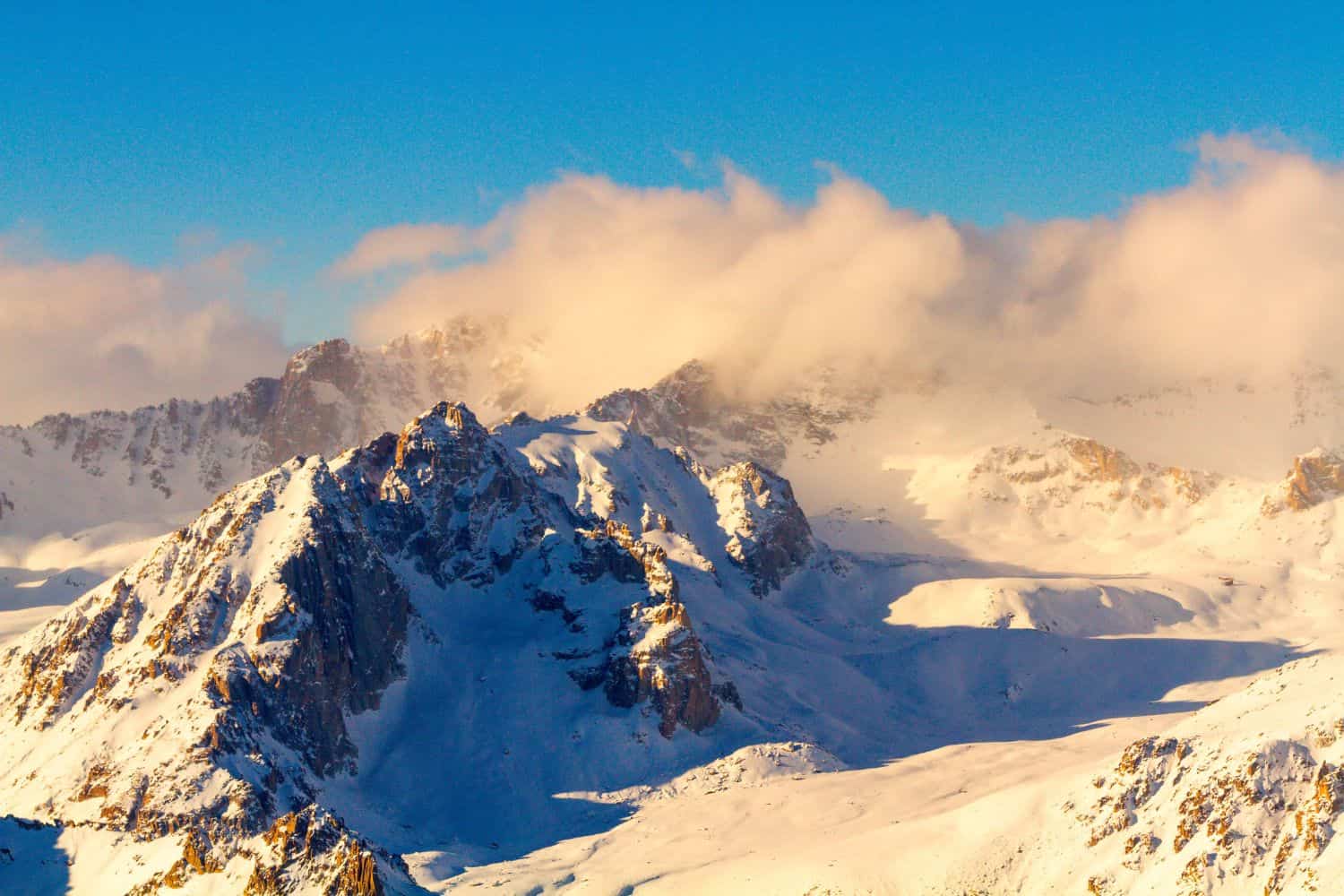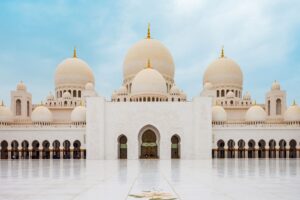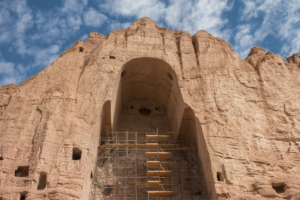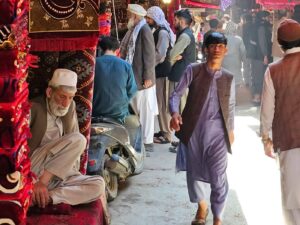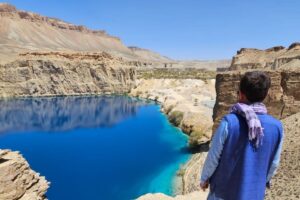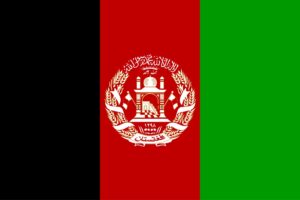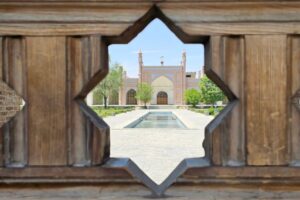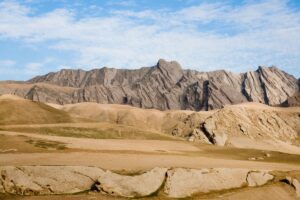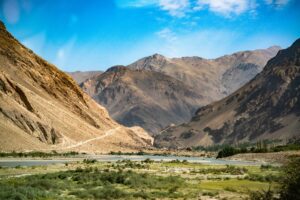Table of Contents
The geography of Afghanistan is a captivating blend of diverse landscapes and historical significance. Situated in Central Asia, this landlocked nation’s geographic location has played a pivotal role in shaping its history and cultural identity.
Nestled in Central Asia, Afghanistan geography beckons adventurous travelers with its rugged mountain ranges, captivating valleys, and ancient historical sites. From exploring the majestic Hindu Kush to uncovering the cultural tapestry of Kabul, Afghanistan’s diverse landscapes and rich history offer an unforgettable journey for intrepid tourists seeking a unique and enriching experience.
The physical geography of Afghanistan paints a picture of awe-inspiring natural masterpieces. From the awe-inspiring cliffs of the Bamiyan Valley, once home to colossal Buddhas that represented the nation’s rich Buddhist heritage, to the diverse ecosystems that dot the country, Afghanistan stands as a testament to nature’s grandeur.
Top Geographic Features of Afghanistan
- Hindu Kush Mountain Range: The towering Hindu Kush range spans across much of Afghanistan, shaping its topography and influencing climate patterns.
- Amu Darya River: One of Afghanistan’s major rivers, the Amu Darya, flows through the northern part of the country, providing crucial water resources for agriculture and irrigation.
- Khyber Pass: This historic mountain pass in the Hindu Kush connects Afghanistan with neighboring Pakistan and has been an important trade and invasion route throughout history.
- Registan Desert: Vast and arid desert region located in the southwestern part of Afghanistan. It is characterized by its sandy landscapes, salt flats, and occasional sand dunes.
- Bamiyan Valley: Famous for the once colossal Buddha statues carved into the cliffs, the Bamiyan Valley holds significant historical and cultural importance.
- Pamir Mountains: The Pamir Mountains in northeastern Afghanistan are part of the “Roof of the World,” featuring some of the highest peaks and glaciers in the region.
- Helmand River: Another important river in Afghanistan, the Helmand River, flows through the southern part of the country and is vital for irrigation and agriculture.
- Band-e Amir National Park: This collection of deep blue lakes in the Hindu Kush region offers a stunning and unique natural wonder in Afghanistan.
- Tora Bora Caves: Located in the eastern part of Afghanistan, these caves gained international attention as they were suspected to be a hiding place for militants.
- Wakhan Corridor: A narrow strip of land in northeastern Afghanistan that separates the country from China and Tajikistan, serving as a remote and geographically isolated region.
These geographic features play a crucial role in shaping Afghanistan’s landscape, climate, and cultural history, making them essential elements in defining the country’s geography.
Afghanistan Geography
Exploring the Afghanistan National Geographic canvas reveals a stunning array of geographic features. From towering mountain ranges to arid deserts and lush valleys, the country offers a mesmerizing tapestry of natural wonders.
- Mountain Ranges – The Crown of Diversity: Similar to documentaries that often feature towering mountain ranges, Afghanistan boasts the majestic Hindu Kush and Pamir ranges. These rugged peaks not only add to the country’s scenic beauty but also offer unique biodiversity and have shaped its cultural identity.
- Lakes – A Kaleidoscope of Colors: Afghanistan’s Band-e Amir National Park, with its six stunning turquoise lakes, resembles the picturesque landscapes captured in photographs. These crystal-clear lakes, surrounded by rocky cliffs, reflect the region’s geological richness.
- Deserts – Undulating Sands of Time: Just as desert features highlight vast sandscapes, Afghanistan’s Dasht-e Lut Desert showcases undulating sand dunes and extreme temperatures. This arid region tells stories of resilience and adaptation in the face of nature’s challenges.
- Historical Sites – Unveiling the Past: Afghanistan’s historical sites, like the Bamiyan Valley, evoke memories of explorations that uncover ancient civilizations. The remnants of colossal Buddha statues carved into cliffs stand as testament to the country’s rich Buddhist heritage.
- Ethnic Diversity – A Cultural Melting Pot: Similar to the National Geographic focus on diverse cultures, Afghanistan is a tapestry of ethnic groups, including Pashtuns, Tajiks, Hazaras, and Uzbeks. Each group contributes unique traditions, languages, and customs, creating a vibrant cultural mosaic.
- Wildlife – A Sanctuary for Nature: Afghanistan’s protected areas, such as the Sistan Basin wetlands, mirror the coverage of wildlife conservation. These regions serve as crucial habitats for migratory birds and other wildlife, preserving biodiversity in a challenging environment.
- Geological Marvels – A Natural Showcase: The country’s geological wonders, like the Salang Tunnel, showcase Afghanistan’s engineering ingenuity amidst the formidable Hindu Kush. Such structures demonstrate human perseverance in overcoming geographic barriers.
- Remote Exploration – Uncharted Territories: The remote and isolated Wakhan Corridor beckons adventurers, much like quests into uncharted territories. This narrow strip of land offers a glimpse into untouched landscapes and ancient cultural connections.
Afghanistan geographic features are marked by the dominating presence of the Hindu Kush and Pamir mountain ranges. These majestic peaks, soaring above 7,000 meters, create a breathtaking backdrop for the nation’s diverse topography. The historic Khyber Pass, a critical trade route, weaves its way through these formidable mountains, connecting the realms of South Asia and Central Asia.
Flowing gracefully through the Afghan terrain are the life-giving rivers of Amu Darya and the Helmand River, vital for agriculture and irrigation. Additionally, the expansive Dasht-e Kavir and Dasht-e Lut deserts add to the country’s unique geography.
Afghanistan Geographic Location
Afghanistan Geographic Location is very strategic, and its location has bestowed upon it a pivotal role throughout history. Positioned on the ancient Silk Road, the country facilitated the exchange of goods, ideas, and cultures between the East and West, leaving an indelible mark on its historical importance.
Borders of Afghanistan
Afghanistan shares borders with six countries. Here is Afghanistan physical geography with the neighboring countries and the approximate total length of each border:
- Iran: The border between Afghanistan and Iran is approximately 921 kilometers long.
- Pakistan: The border between Afghanistan and Pakistan is approximately 2,670 kilometers long, making it the longest international border for Afghanistan.
- Turkmenistan: The border between Afghanistan and Turkmenistan is approximately 804 kilometers long.
- Uzbekistan: The border between Afghanistan and Uzbekistan is approximately 144 kilometers long.
- Tajikistan: The border between Afghanistan and Tajikistan is approximately 1,206 kilometers long.
- China (via Wakhan Corridor): The border between Afghanistan and China is approximately 76 kilometers long, passing through the narrow and remote Wakhan Corridor.
| Afghanistan Neighboring Country | Border Length (Approximate) |
|---|---|
| Iran | 921 kilometers |
| Pakistan | 2,670 kilometers |
| Turkmenistan | 804 kilometers |
| Uzbekistan | 144 kilometers |
| Tajikistan | 1,206 kilometers |
| China (via Wakhan Corridor) | 76 kilometers |
These international borders define Afghanistan’s connections to different regions and contribute to the country’s geopolitical significance as a crossroads between Central Asia, South Asia, and the Middle East.
Geography of Kabul Afghanistan
As the capital city of Afghanistan, Kabul is a fascinating microcosm of the country’s human geography. Here, various ethnic groups, including Pashtuns, Tajiks, Hazaras, and Uzbeks, coexist, contributing to the city’s vibrant cultural tapestry.
Kabul, the capital city of Afghanistan
- City of Contrasts: Kabul is known for its stark contrasts, where modern developments coexist with traditional neighborhoods, creating a unique blend of old and new.
- Kabul River: The Kabul River flows through the city, providing water for irrigation and contributing to the city’s agriculture.
- Kabul’s Elevation: The city is located at a high elevation, approximately 1,790 meters (5,873 feet) above sea level, surrounded by the towering peaks of the Hindu Kush mountains.
- Green Spaces: Kabul is home to several beautiful gardens and parks, including the Babur Gardens, offering a serene escape amidst the bustling city.
- Kabul’s Historical Significance: With a history dating back over 3,500 years, Kabul has witnessed various civilizations and played a pivotal role in ancient trade routes.
- Diverse Architecture: The city showcases a diverse architectural heritage, reflecting influences from Persian, Islamic, and modern styles.
- Snow-Capped Mountains: During winter, the surrounding mountains, including the nearby Koh-e Asmai, are often covered in snow, adding to the city’s picturesque landscape.
- Bala Hissar Fortress: The historic Bala Hissar Fortress, perched on a hill overlooking Kabul, is an iconic symbol of the city’s strategic importance throughout history.
- Kabul’s Economy: The city serves as Afghanistan’s economic and cultural center, attracting people from all over the country seeking opportunities and education.
- Population Growth: Kabul has experienced rapid population growth, with a significant influx of people from rural areas, leading to urbanization and infrastructure challenges.
Historical Geographical Importance of Afghanistan
Throughout the ages, Afghanistan’s geographical significance has made it a sought-after stage for historical drama. As empires rose and fell, from the Persians to the Mongols and British, Afghanistan’s geographic position played a pivotal role in shaping the world’s history.
- Strategic Crossroads: Afghanistan’s location at the crossroads of Central Asia, South Asia, and the Middle East has made it a strategic point for trade, cultural exchange, and military conquests throughout history.
- Ancient Trade Routes: The ancient Silk Road and other trade routes passed through Afghanistan, connecting the East and West, facilitating the exchange of goods, ideas, and cultures.
- Alexander the Great’s Conquests: Afghanistan was a key battleground during Alexander the Great’s conquests in the 4th century BCE, as he sought to expand his empire eastward.
- The Great Game: During the 19th century, Afghanistan became a focal point of the Great Game, a geopolitical rivalry between the British Empire and the Russian Empire for control over Central Asia.
- British-Afghan Wars: Afghanistan’s geographic position played a significant role in the three Anglo-Afghan Wars, where the British sought to protect their Indian territories from Russian influence.
- Influence of Persian Empires: Afghanistan was part of various Persian empires, including the Achaemenids, Parthians, and Sassanians, shaping its culture and history.
- Conquests of Genghis Khan and the Mongols: The Mongol invasions of the 13th century had a profound impact on Afghanistan’s history, leaving lasting cultural and political legacies.
- Timurid Dynasty: The Timurid dynasty, founded by the renowned conqueror Timur, ruled over Afghanistan and left a significant architectural and cultural heritage.
- The Great Wall of Afghanistan: The ancient Great Wall of Afghanistan, known as the “Wall of Alexander,” was constructed to fortify the northern borders of the Greek empire.
- Influence of Islam: Afghanistan’s geographic location at the crossroads of empires also made it a key center for the spread of Islam, influencing its culture, art, and architecture.
The geographical position of Afghanistan is a kaleidoscope of beauty and historical importance. With its stunning mountain ranges, ancient trade routes, and diverse cultural landscapes, this landlocked nation continues to capture the world’s imagination. Despite challenges, Afghanistan remains a compelling destination for the intrepid traveler and curious explorer, drawn to its tapestry of nature’s wonders and historical intrigue.
In conclusion, Afghanistan’s geographical significance has made it a stage for historical drama, with various empires and civilizations vying for control and leaving their mark on the region’s history. Its strategic position has shaped the world’s historical events and continues to play a pivotal role in the geopolitics of the region today.

